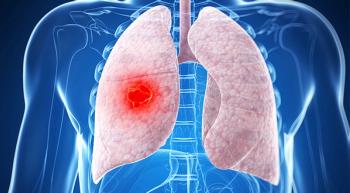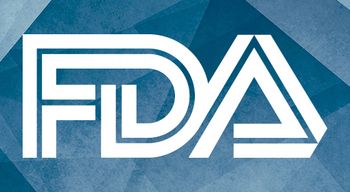
There are special concerns for oncology nurses when treating LGBTQ patients, according to a panel of experts that presented at the 2019 Oncology Nursing Society (ONS) Annual Congress in Anaheim, CA.

There are special concerns for oncology nurses when treating LGBTQ patients, according to a panel of experts that presented at the 2019 Oncology Nursing Society (ONS) Annual Congress in Anaheim, CA.



Dr. Jinsil Seong, Professor at Yonsei University Medical College, is honored for her ground-breaking work in primary liver cancer.

The FDA granted an accelerated approval for erdafitinib to treat patients with metastatic or locally advanced bladder cancer that harbors certain genetic mutations.

The FDA has expanded the approval for pembrolizumab (Keytruda) monotherapy for the frontline treatment of patients with stage III non–small cell lung cancer (NSCLC), who are ineligible for surgery or definitive chemoradiation, or metastatic NSCLC, with a PD-L1 expression (tumor proportion score [TPS]) level of ≥1% and do not harbor EGFR or ALK aberrations.

Merger combines more than 30 years of patient-centered expertise to Empower Everyone, Ignore No One.

Nurses play a key role in nurses can play in raising awareness and educating others about a disease that is often not talked about.

The Food and Drug Administration (FDA) expanded the approved use of palbociclib (Ibrance) capsules plus endocrine therapy to treat male patients with hormone receptor (HR)–positive, HER2-negative advanced or metastatic breast cancer, according to an announcement by the agency.

The immunotherapy agent showed promise in pre-treated patients with the disease.

The point-of-care model was proven to work better than the referral model when it came to ensuring that patients undergo the genetic screening that they needed.


Here are the top 5 Oncology Nursing News stories for March 2019.

The Food and Drug Administration decided to keep the device on the market, but wants to know more about the illnesses they may potentially be linked to.

It is better to introduce the topic sooner rather than later, according to one expert.

Ninety percent of patients with cancer enter their first oncology appointment with a nutritional issue, according to Susan Bratton. However, Savor Health, who works in conjunctions with Merck’s Your Cancer Game Plan, has set out to combat just that.

Nurses and other healthcare providers can mitigate emotional distress and improve quality of life in patients with cancer by having earlier and more thorough conversations about their care, according to a recent study conducted at the Dana-Farber Cancer Institute.

The FDA has granted a breakthrough therapy designation to the combination of ivosidenib (Tibsovo) and azacitidine for the treatment of newly diagnosed patients with IDH1-mutant acute myeloid leukemia (AML) ≥75 years old or are ineligible for intensive induction chemotherapy.

The FDA announced today that it is working to update mammography regulations, expanding the amount of information that mammography facilities must give patients and healthcare professionals. In turn, this would result in more informed decision-making – especially when it comes to breast cancer diagnoses.

The three finalists are oncology nurses who have gone above and beyond for cancer patients.

While there are some exciting advances coming down the pipeline, there is still much work to do when it comes to the molecular diagnosis of patients with renal cell carcinoma (RCC), explained David I. Quinn, MBBS, PhD, FRACP, FACP.

Wells A. Messersmith, MD, co-director of the developmental therapeutics program at the University of Colorado Cancer Center, said work in this area is needed to fill the knowledge gaps in metastatic CRC, which has a 5-year survival rate of just 11%.

Check out this infographic exploring 5 ways oncology nurses can do their part to improve cancer care for their patients.

Oncology nurses must discuss treatment options and adverse events with their patients who have ovarian cancer.

Man’s best friend may eventually be healthcare’s best friend.

Team V raises thousands to support cancer research

Fourth-Generation, Family-Owned Egg and Feed Farm Joins Local Cycling Event to Achieve Victory Over Cancer®

The FDA has granted an approval to the combination of atezolizumab (Tecentriq) with carboplatin and etoposide for the frontline treatment of patients with extensive-stage small cell lung cancer (ES-SCLC).

An expert discusses the role oncology nurses play in managing the adverse events of patients with breast cancer.

Listen to the first-ever episode of the CURE Talks Cancer Podcast: Nursing Edition.